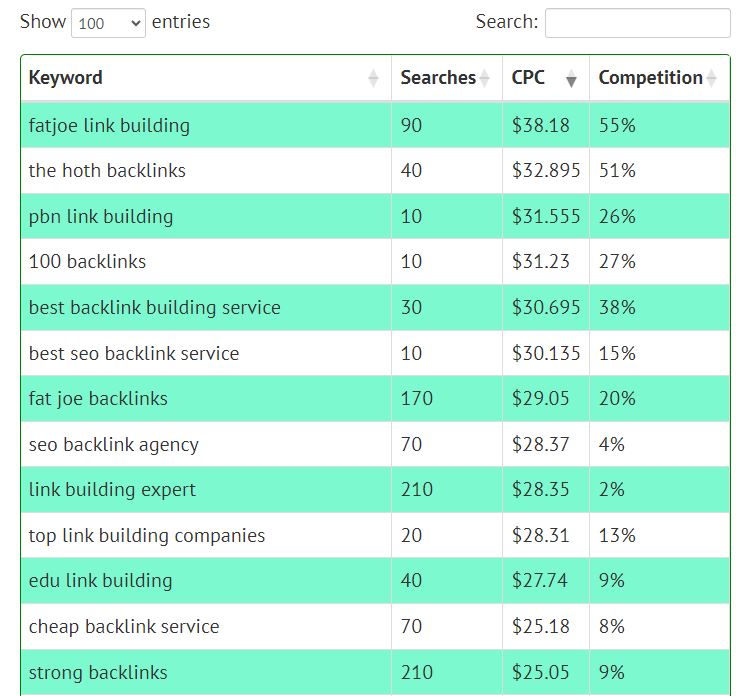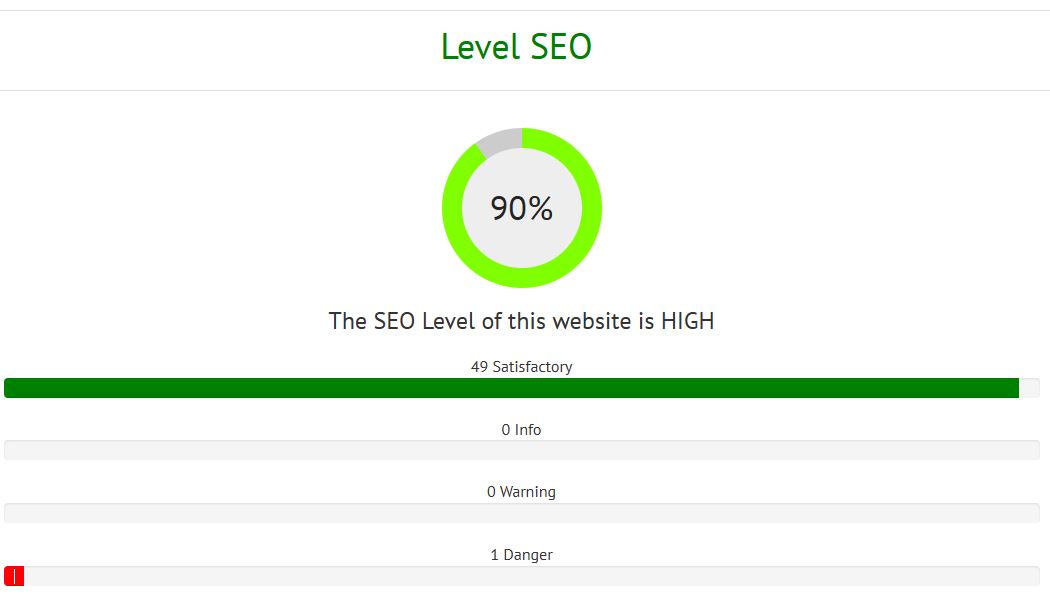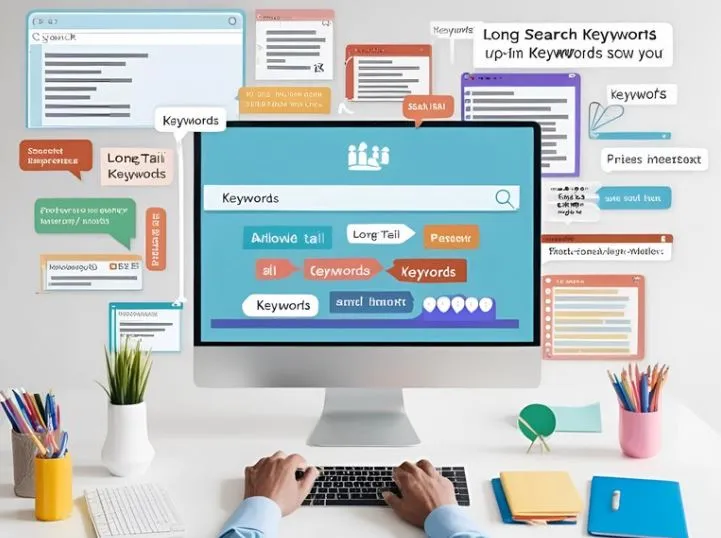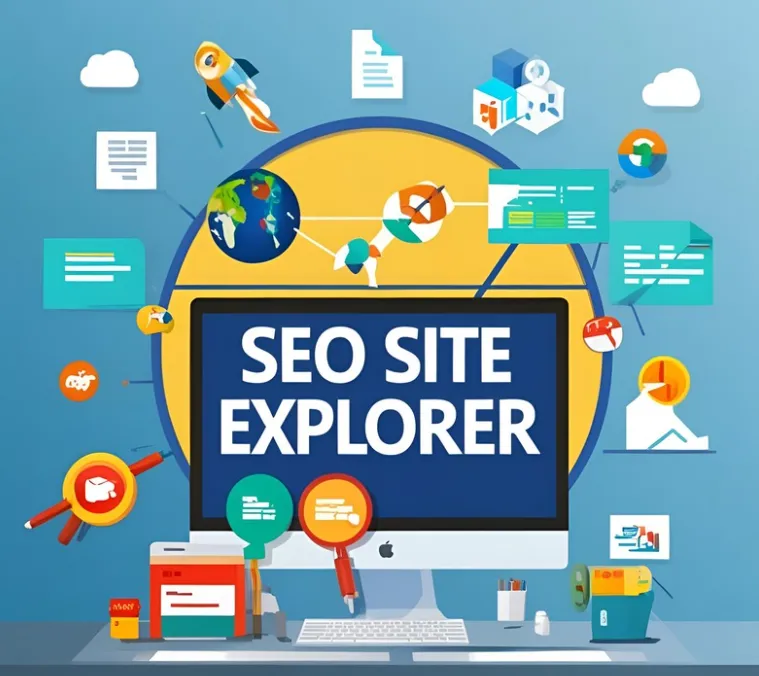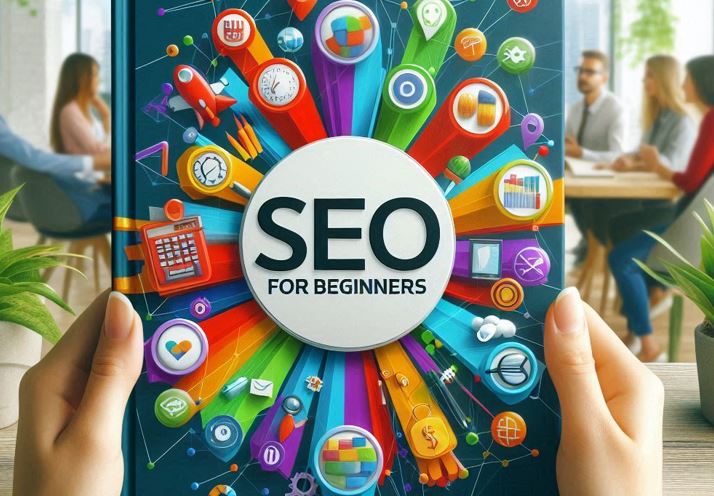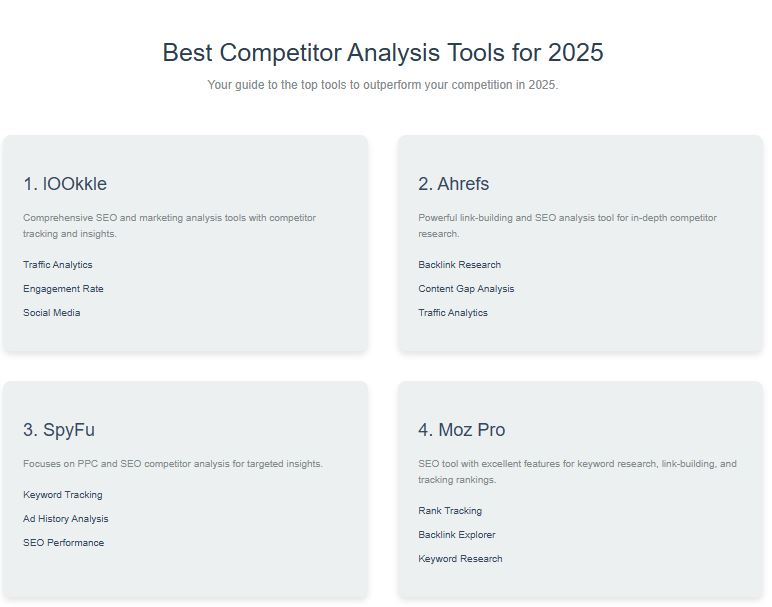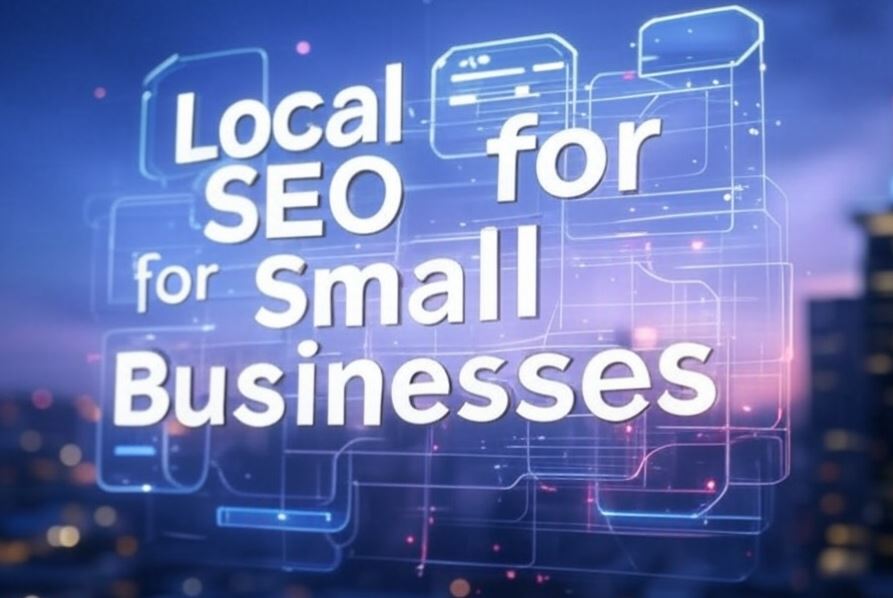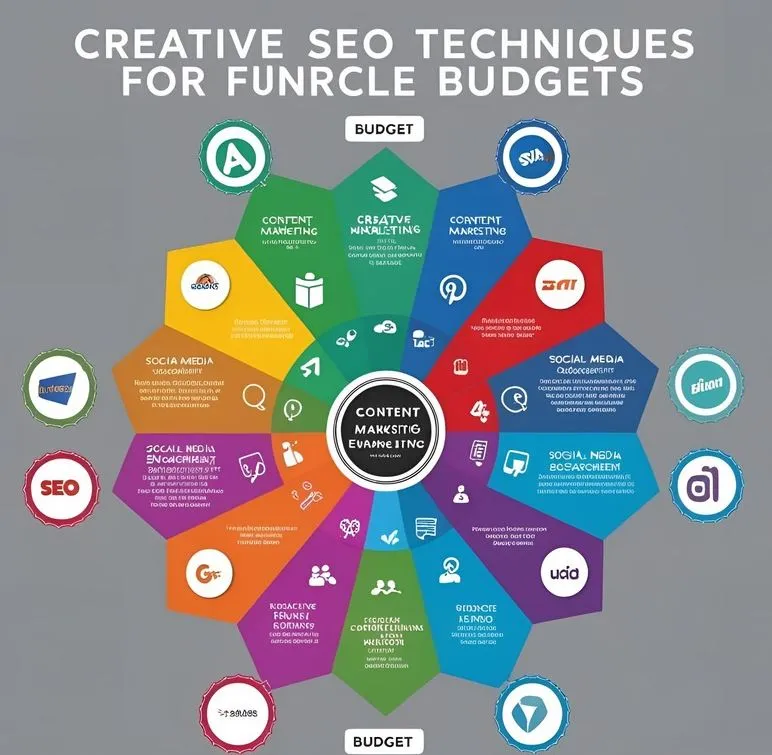
For a small business just starting out in the business world with limited resources, competing with established giants may seem impossible. However, with a smart SEO strategy and the right tools, a startup can rank high on Google without spending thousands of dollars on agencies or advertising campaigns.
How to Compete Against Big Companies
1. Focus on a very specific niche
Large companies often target broad markets. As a small business, you can focus on a smaller but very defined audience with clear needs that aren't fully addressed. Become the expert in that segment.
Large brands try to serve everyone. This forces them to be generic, sometimes even impersonal. This is where small businesses have a huge advantage: they can be extremely relevant to a small, specific group of people.
What is a niche?
A niche is a subcategory within a market. It's not simply an industry, but a specific audience with specific needs.
For example:
"Fitness" is an industry.
"Women over 50 who want to do yoga at home" is a niche.
Real-life examples
- Example 1: Productivity software
- General market: Productivity tools
- Specific niche: Creative freelancers who need to manage projects, clients, and invoicing in a single app
- Strategy: A startup can create a lightweight app with specific features for this type of user, without the complexity of platforms like Monday or Asana.
- Example 2: Clothing e-commerce
- General market: Fashion
- Specific niche: Eco-friendly clothing for new mothers
- Strategy: Create a brand with sustainable values, comfortable postpartum sizes, organic fabrics, and content geared toward this stage of life. No major mass brand can personalize its message so much.
- Example 3: Digital marketing
- General market: SEO services
- Specific niche: SEO for independent aesthetic doctors in Spain
- Strategy: Create content, success stories, and services 100% tailored to the language, searches, and goals of this profile. Here, tools like Lookkle.com's SEO Site Explorer can help you analyze local competitors, discover highly targeted keywords, and optimize your online presence.
How to find your niche?
- Look at your previous experience or network of contacts.
What types of clients do you already serve well? - Research forums and social media.
Which groups have problems that no one is addressing well? - Use tools like Lookkle SEO Site Explorer.
Find out who's ranking in certain niches and what content is working. - Validate quickly.
Create a landing page, publish content, and measure whether that audience responds positively.
2. Offer a Personalized Experience
Why is this strategy so powerful?
Large companies operate at scale, which forces them to standardize processes: automated customer service, generic products, and mass marketing campaigns. This limits their flexibility and emotional connection with customers.
Smaller businesses, on the other hand, can:
-
Know their customers by name
-
Adapt products to specific needs
-
Respond quickly with personalized solutions
-
Humanize every interaction
That feeling of being “heard” and “valued” is what creates long-term loyalty.
Real-World Examples
- Example 1: Design agency for solo entrepreneurs
-
Big company: Offers pre-set packages with standard pricing and little customization.
-
Small agency: Schedules a video call to understand the client's brand, customizes designs based on personal style, and offers unlimited revisions.
-
Result: The client feels the design was created for them, not just delivered from a template.
-
-
Example 2: Artisan coffee online shop
-
Big retailer: Sells generic coffee in bulk with automated customer service.
-
Small shop: Sends a follow-up email after every order, recommends new coffee blends based on taste preferences, and includes a handwritten note in every package.
-
Result: The customer becomes a brand ambassador and returns not just for the coffee—but for the experience.
-
-
Example 3: SEO consulting using Site Explorer
-
Big SEO agency: Uses a one-size-fits-all strategy based on keyword volume and generic tools.
-
Independent consultant: Personally audits the client’s site using tools like SEO Site Explorer by Lookkle.com, finds niche-specific keyword opportunities, and builds a customized action plan based on the client's goals and industry.
-
Result: The client sees faster results and feels guided by someone who understands their business context.
-
Practical Ways to Offer Personalized Experiences
-
Build a customer database that includes interests, past purchases, and common pain points.
-
Use that data to send tailored product or service recommendations.
-
Offer real human support via WhatsApp, email, or video calls.
-
Listen to feedback and tweak your offering based on it.
-
Add human touches like handwritten notes or birthday messages.
3. Why is speed such a powerful advantage for startups?
What does “moving faster” really mean?
-
You can test new ideas quickly without needing corporate approval.
-
You can release product updates or new features in days—not quarters.
-
You can respond to market feedback immediately, not months later.
-
You can take risks, learn fast, and improve faster than big competitors.
Real-World Examples
-
Example 1: Testing a new feature. A large software company may take six months to roll out a new feature because it has to go through product teams, QA, legal, and marketing. A startup can:
-
Build an MVP version in a week
-
Launch it to a small user group
-
Collect feedback, and iterate quickly
-
Result: Faster learning, better product-market fit, and happier users.
-
-
Example 2: Responding to a trend
Let’s say there's a sudden SEO update from Google. A startup offering SEO services using Lookkle.com’s SEO Site Explorer can analyze the impact right away, adjust their keyword strategy, and notify clients the same week.
Meanwhile, a large agency may need a month to update all processes.
-
Example 3: Adapting your messaging
If your audience suddenly shifts focus (for example, more people looking for budget-friendly travel in 2025), you can update your website content, ads, and email sequences in a day. A corporate brand? Not so much.
How to take full advantage of your speed
-
Use agile frameworks: break big goals into weekly sprints.
-
Track real-time data (like with Site Explorer) to make data-driven decisions quickly.
-
Focus on launching “good enough” solutions and improve as you go—done is better than perfect.
-
Have clear workflows so your team (or just you) can act fast without waiting.
4. Use Smart, Affordable Tools
Competing with fewer resources? Use better tools.
Startups don’t usually have the luxury of a big marketing team, expensive software stacks, or external agencies. But the good news is—you don’t need them.
Today, there are powerful and affordable tools that give small businesses access to the same (or better) insights than what large companies pay thousands for.
What kind of tools are we talking about?
Tools like SEO Site Explorer by Lookkle.com give you the ability to:
-
Analyze your competitors' websites
-
Discover keyword opportunities your competitors aren’t targeting
-
Monitor your own SEO performance
-
Study backlinks to understand what sites are linking to you or your rivals
-
Improve your on-page SEO, page speed, and metadata
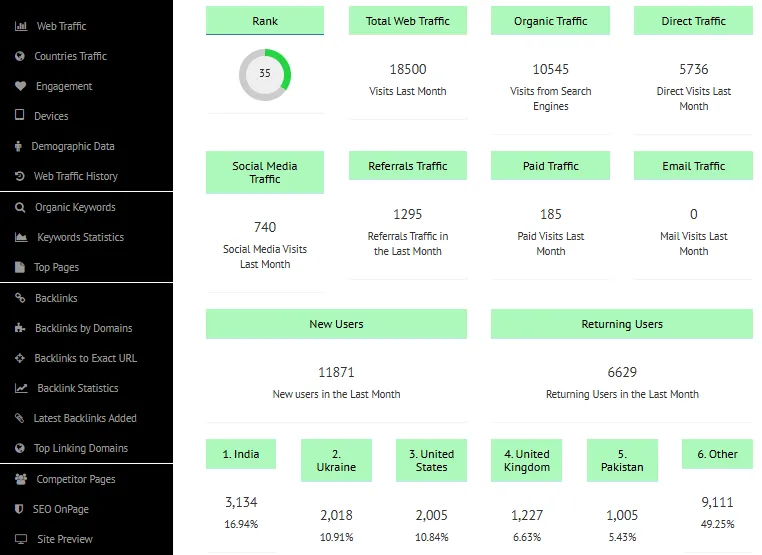
And all of this, without needing to hire a full SEO team or agency.
Real-World Startup Use Cases
-
Example 1: A travel blog targeting budget tourism. Instead of guessing what people are searching for, the founder uses SEO Site Explorer to:
-
Find low-competition, high-intent keywords like “affordable Greece island tours”
-
Analyze what top-ranking blogs are doing
-
Optimize each article with the right headings and internal links
Result: Organic traffic increases in weeks, not months—and without spending on ads.
-
-
Example 2: An eCommerce store selling pet accessories. The store owner uses Site Explorer to:
-
Monitor which keywords competitors rank for (e.g., “eco-friendly dog leash”)
-
Identify backlink opportunities by seeing who links to their competitors
-
Improve product pages using on-page SEO insights
Result: Better visibility on Google and more traffic from users actively searching for what they sell.
-
-
Example 3: A local service business (like a personal trainer or dentist). They use Site Explorer to:
-
Understand what keywords are trending in their area (e.g., “best personal trainer in Austin”)
-
See what kind of content ranks well (blogs, service pages, FAQs)
-
Fix on-page SEO issues flagged by the tool
Result: They outrank national chains in local searches by being more relevant and optimized.
-
5. Create Consistent, High-Value Content
What kind of content works?
-
Blog posts answering common questions
-
Step-by-step guides that help solve specific problems
-
Videos explaining how to use your product or service
-
Case studies showing real-world results
-
Opinion pieces that position you as a thought leader in your niche
Example Topics Based on Industry:
-
Tech startup: “How We Launched Our MVP in 30 Days (And What We’d Do Differently)”
-
Local business: “Top 5 Things to Look for in a Personal Trainer in [Your City]”
-
eCommerce: “How to Choose the Right Size Harness for Your Dog (With Chart)”
-
SaaS tool: “3 SEO Quick Wins Using Lookkle.com’s Site Explorer (Beginner Guide)”
How SEO Site Explorer Helps You Create Better Content
-
Find low-competition keywords that your ideal audience is searching
-
Analyze your competitors' top-performing pages
-
Discover what questions people ask about your niche
-
Monitor how well your articles are ranking
-
Identify backlink opportunities to boost your content’s reach
6. Build a Strong Brand and Community
Why brand and community matter more than ever:
-
People want to support brands that reflect their values.
-
Community-driven brands grow through word of mouth.
-
A clear identity helps customers remember and trust you.
-
Brand loyalty means customers stick with you even if a cheaper option appears.
How to Build a Strong Brand as a Startup:
-
Define your voice and purpose
What do you stand for? Who are you here to help? Make it clear in your messaging. -
Stay consistent across all channels
Use the same tone, colors, and values whether you're writing a blog post, an Instagram caption, or a support email. -
Be human
Show your team. Share your journey. Let your customers see the people behind the product. -
Engage with your audience
Ask questions, reply to comments, highlight user stories, and celebrate milestones with your followers.
Real-World Examples
A local sustainable skincare brand
-
Shares behind-the-scenes stories about how their products are made
-
Talks openly about ingredients and values
-
Encourages customers to share selfies using their products with the hashtag #GlowWithNature
Result: A loyal community forms around their shared values of sustainability and self-care. -
Builds a blog that not only ranks, but also connects emotionally with travelers featuring local stories, ethical travel tips, and real adventures.
-
Shares user-submitted photos on social media and newsletters.
How to Start Building Community
-
Create a private group (on Facebook, Discord, etc.) where your audience can interact
-
Feature your customers in newsletters or blogs
-
Host AMAs, live Q&As, or webinars
-
Use surveys and feedback forms to make them feel heard
-
Align your messaging with causes or ideas your audience cares about
7. Collaborate with Other Small Brands
It’s about creating mutually beneficial partnerships. These aren't competitors, but rather brands that:
-
Share similar values
-
Serve a related audience
-
Offer complementary products or services
You're not fighting over the same pie, you’re baking a bigger one together.
Real-World Collaboration Examples
-
Example 1: An artisan tea brand + a local ceramics studio
-
Launch a joint “tea & mug” gift set.
-
Promote across both social media audiences.
-
Split the cost of professional photography.
Result: Double the exposure and a beautiful product without breaking the bank.
-
-
Example 2: A wellness coach + an independent nutritionist
-
Host a free co-branded webinar on holistic health.
-
Share leads and build a joint email list.
Result: Authority boost for both and a relevant, engaged audience.
-
-
Example 3: A small SEO agency + a freelance content writer
-
Use tools like SEO Site Explorer by Lookkle.com to audit client websites.
-
The writer creates optimized content; the agency handles strategy and ranking.
Result: Better results for clients, shared workload, and increased referrals.
-
Simple Ways to Start Collaborating
-
Create co-branded content: blog posts, videos, webinars, or guides
-
Offer cross-promotions or bundled discounts
-
Co-host events or online workshops
-
Build a joint product or digital resource (e.g., an ebook or course)
-
Give each other shoutouts in newsletters or social media
How to properly approach SEO for a small business or startup website
How to rank on Google without a big team or expensive campaigns
A profitable SEO strategy for a small business website is based on three key pillars:
1. Identify Specific Niches Within the Market
Instead of trying to rank for broad, highly competitive terms like "project management software" or "sports shoes," focus on micro-niches very specific needs or subtopics with lower competition.
Examples:
-
Instead of “marketing agency,” go for “SEO agency for dental clinics”
-
Instead of “running shoes,” try “running shoes for plantar fasciitis”
Tools like keyword research by lOOkkle help you:
-
Discover long-tail keywords with high intent.
-
Identify low-competition opportunities.
-
Find underserved topics that big players aren’t targeting.
2. Create Highly Relevant and Useful Content
Google rewards content that directly addresses user intent. Don’t publish generic articles, create in-depth, clear, and actionable content tailored to real problems your audience faces.
Great content formats:
-
Step-by-step how-to guides
-
Product or service comparisons
-
FAQ-based blog posts
-
Real case studies that show results
Keyword Research Tool helps you:
-
Discover what content is working for competitors
-
Identify content gaps you can fill
-
Uncover popular questions in your niche
3. Monitor Competitors and Adapt Quickly
Large companies are often slow to pivot. You’re not. Use your agility to respond to trends, spot opportunities, and update your content strategy fast.
How to do it:
-
Regularly check your competitors' websites and keyword rankings
-
See which of their pages perform best and how you can improve on them
-
Quickly update content or create new resources as trends shift
SEO Site Explorer Tool lets you:
-
Analyze your competitors’ backlinks
-
Track their most popular pages
-
Benchmark your own rankings against theirs
Case Study: How a B2B Software Startup Tripled Its Organic Traffic in 4 Months Using Lookkle
Startup: SaaSFlow, a small company offering workflow automation software for SMBs.
Marketing team: 2 people
Ad budget: Very limited
Goal: Increase organic traffic to generate leads without relying on paid ads
Tools Used:
Phase 1: Initial Research with Site Explorer
The team used SEO Site Explorer to analyze:
Web traffic of their main competitors.
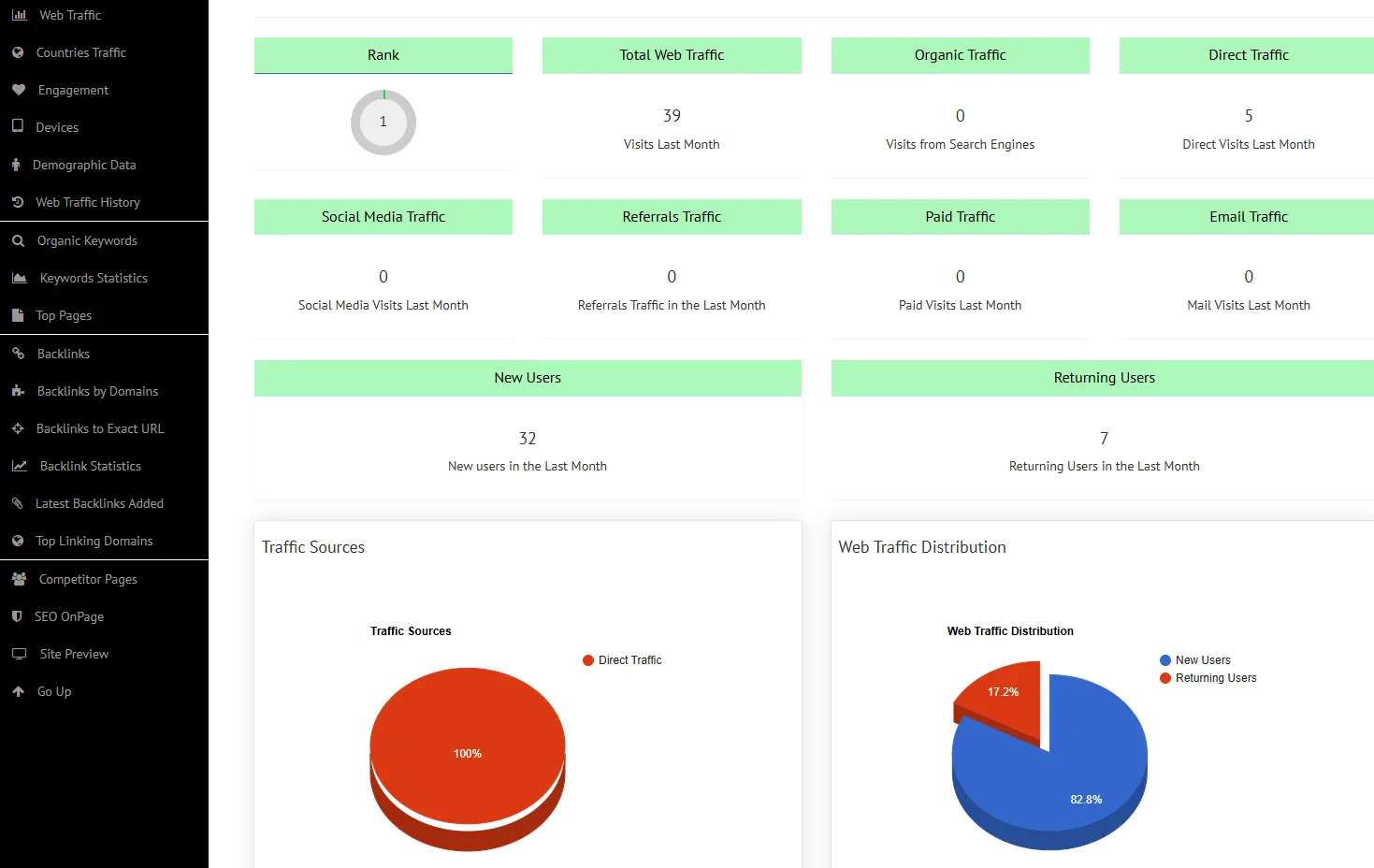
Top performing pages and Organic keywords.
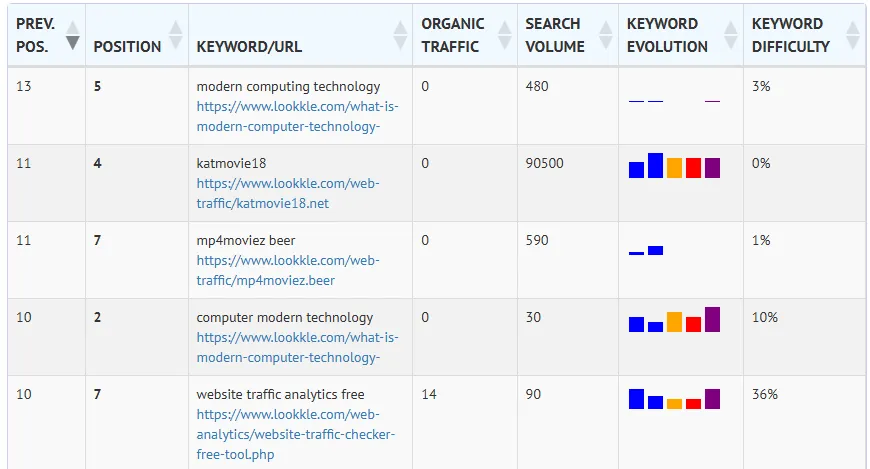
Backlinks.

Demographics and device usage of visitors.
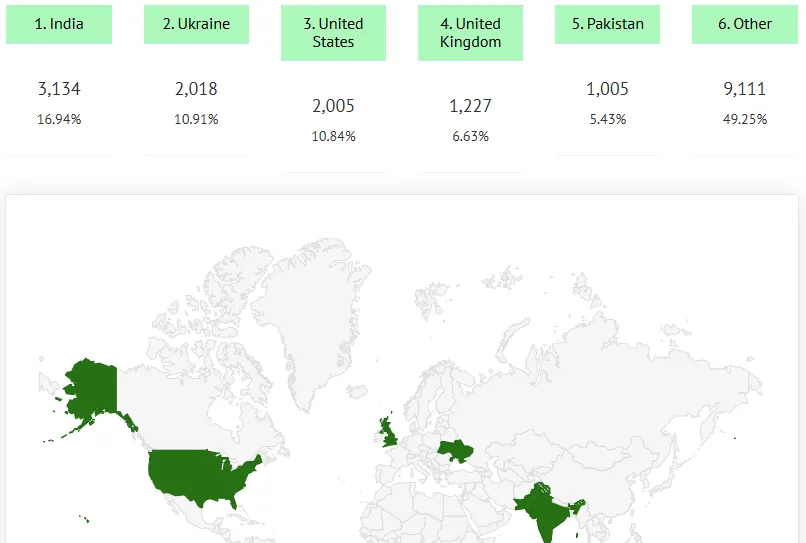
Key Insights:
- The competition generated significant traffic through their blog content, which focused on very specific problems.
- Their most visited pages responded to specific keyword queries.
- Many backlinks came from blogs with articles focused on productivity.
Phase 2: Keyword Research Strategy
Using Lookkle’s Keyword Research Tool, SaaS:
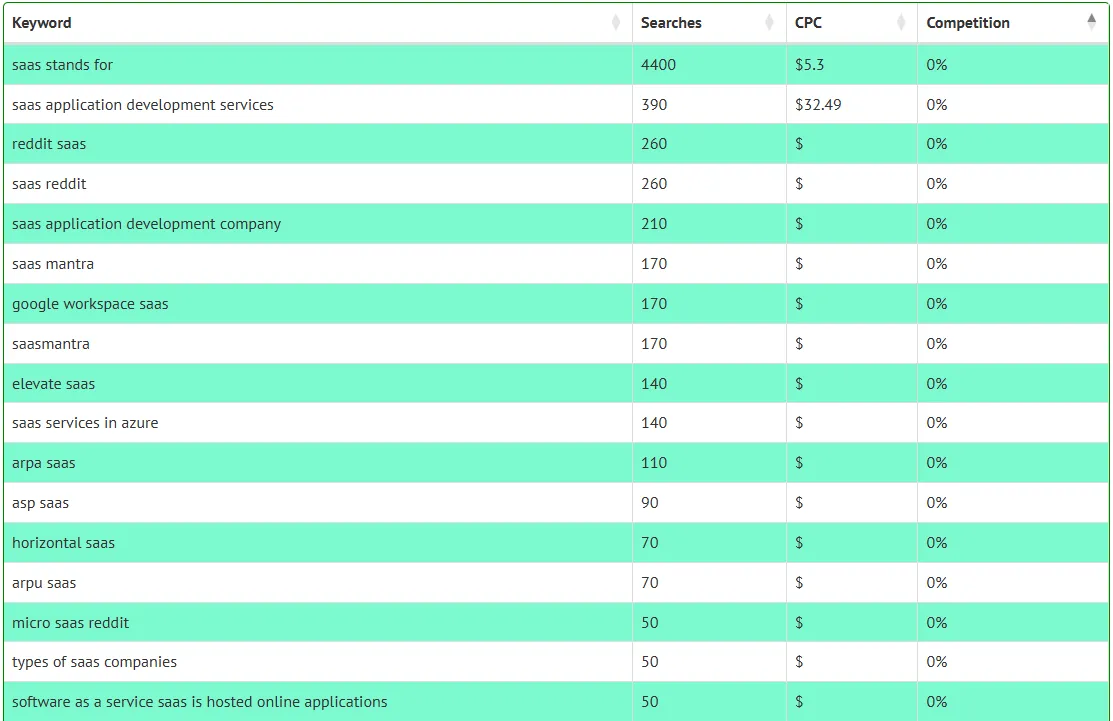
-
Identified long-tail keywords such as:
-
“saas application development services”
-
“software as a service saas is hosted online applications”
-
“digital asset management saas”
-
-
Discovered low-competition, high-intent keyword opportunities.
Phase 3: Focused Content Creation
Based on the findings, they built a content calendar featuring:
-
Practical how-to guides.
-
Real-life use cases.
-
Tool comparison posts.
-
Articles targeting pain points of their ideal customer.
They also:
-
Optimized titles, headers, and meta descriptions.
-
Improved on-page SEO using Site Explorer’s SEO OnPage recommendations.
Phase 4: Backlink and Internal Linking Strategy
From SEO Site Explorer, they reviewed:
-
Which domains were linking to their competitors
-
What types of content were generating the most links
Actions they took:
-
Reached out to niche blogs for guest posts and collaborations
-
Created “ultimate guides” that attracted backlinks
-
Built a strong internal linking structure to boost new content
???? Results After 4 Months:
| Metric | Before | After | % Growth |
|---|---|---|---|
| Monthly organic traffic | 1,200 | 3,600 | +200% |
| Keywords in top 10 results | 18 | 65 | +261% |
| Quality backlinks | 35 | 120 | +243% |
| Average time on page | 1:45 min | 3:12 min | +83% |
| Monthly organic leads | 20 | 62 | +210% |
Tips on SEO and Online Business
Next Articles
Previous Articles
